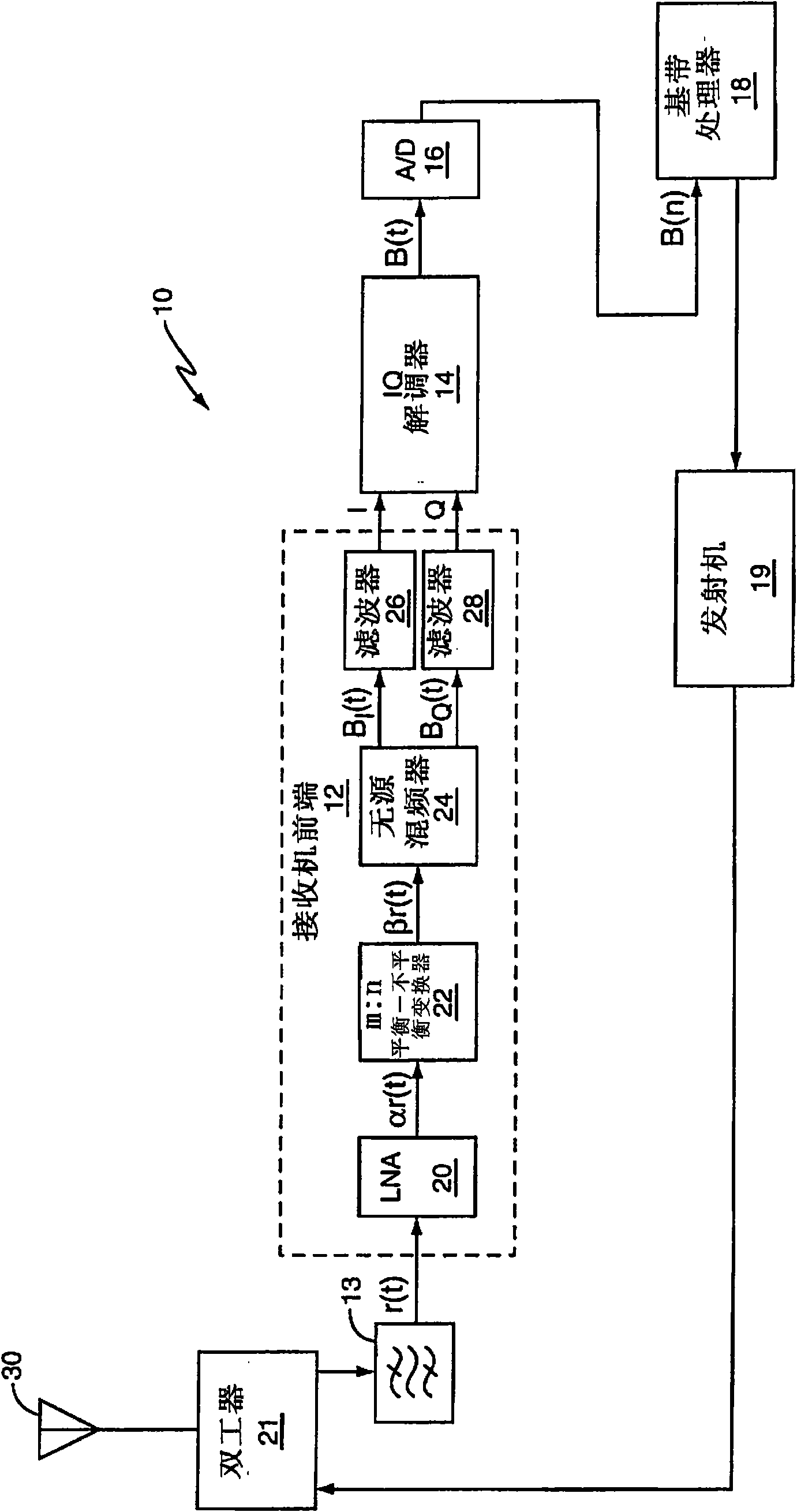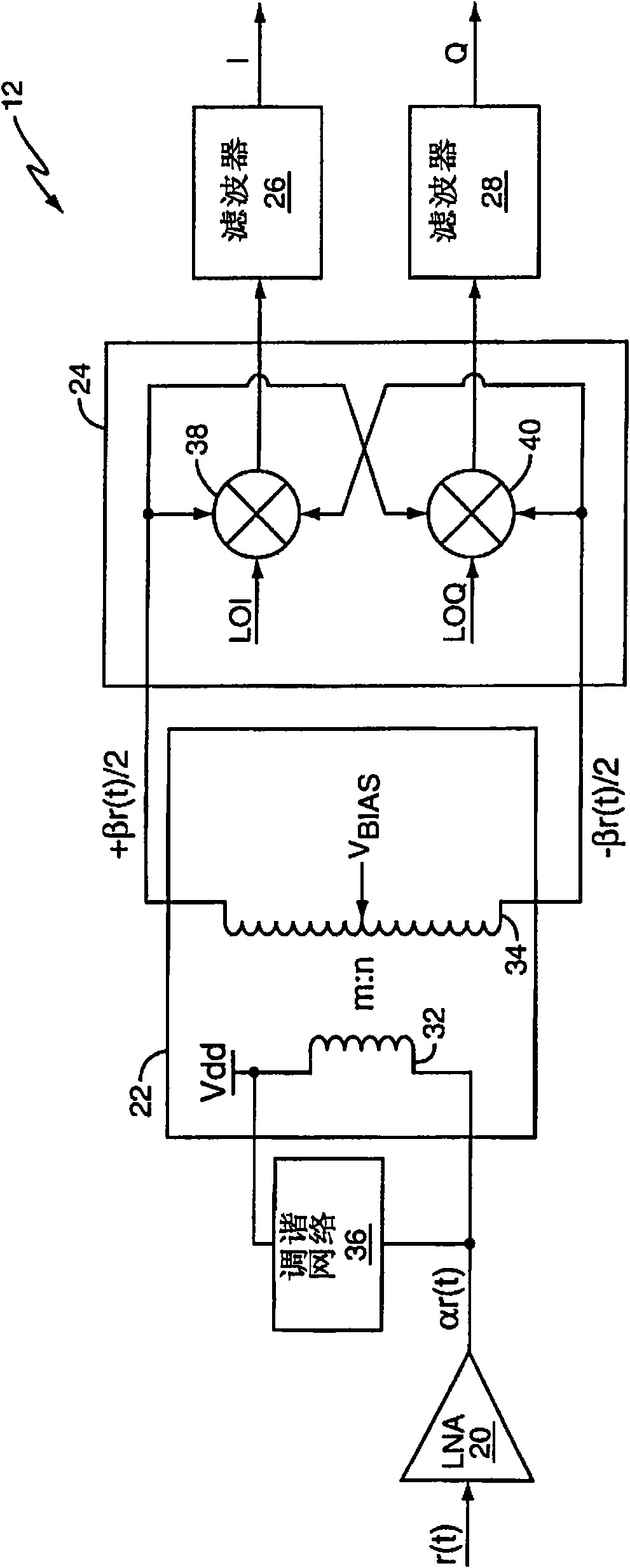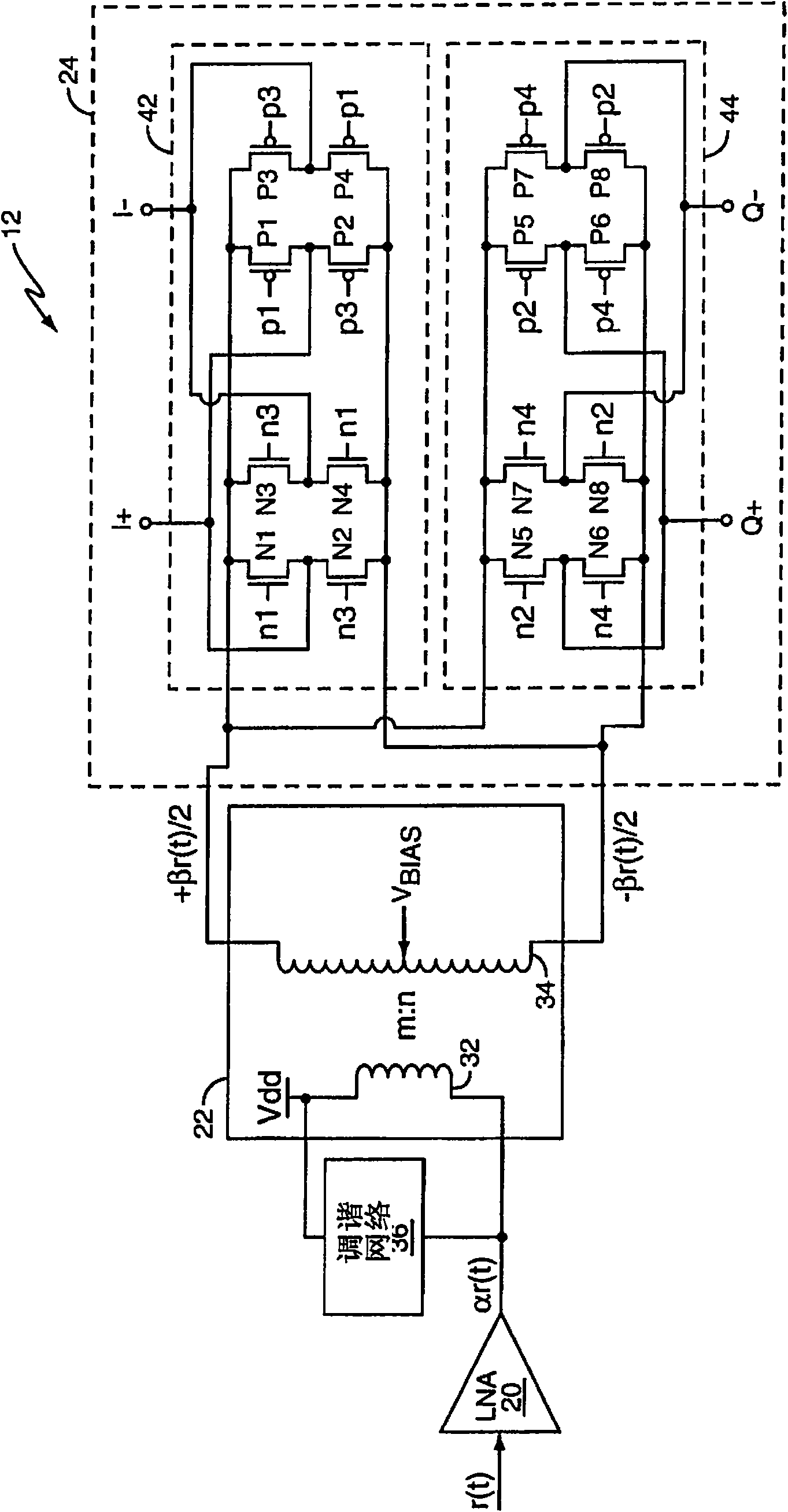Method and apparatus for receiving radio frequency signals
A technology for receivers and input signals, applied in modulation and conversion balance devices, electrical components, demodulation, etc., can solve problems such as difficulties, low voltage margin gain, etc.
- Summary
- Abstract
- Description
- Claims
- Application Information
AI Technical Summary
Problems solved by technology
Method used
Image
Examples
Embodiment Construction
[0017] figure 1 One embodiment of a wireless communication device 10 (eg, mobile phone, wireless, cordless phone, personal digital assistant, global positioning system, wireless local area network (WLAN) adapter (eg, wireless network interface controller), etc.) is shown. Wireless device 10 receives and transmits information via RF signals. The device 10 includes a receiver front end 12 for down-converting the received RF signal r(t) to the desired baseband frequency signal B I (t) / B Q (t). The received signal is filtered eg by a bandpass filter 13 before being processed by the receiver front end 12 . The device 10 also includes a demodulator 14, an analog-to-digital converter 16 and a baseband processor 18 for processing the baseband signal B(n) e.g. by performing decoding, symbol estimation, interference cancellation, bit synchronization, error correction, etc. . Alternatively, the baseband processor 18 also performs signal demodulation. For heterodyne based receivers,...
PUM
 Login to view more
Login to view more Abstract
Description
Claims
Application Information
 Login to view more
Login to view more - R&D Engineer
- R&D Manager
- IP Professional
- Industry Leading Data Capabilities
- Powerful AI technology
- Patent DNA Extraction
Browse by: Latest US Patents, China's latest patents, Technical Efficacy Thesaurus, Application Domain, Technology Topic.
© 2024 PatSnap. All rights reserved.Legal|Privacy policy|Modern Slavery Act Transparency Statement|Sitemap



